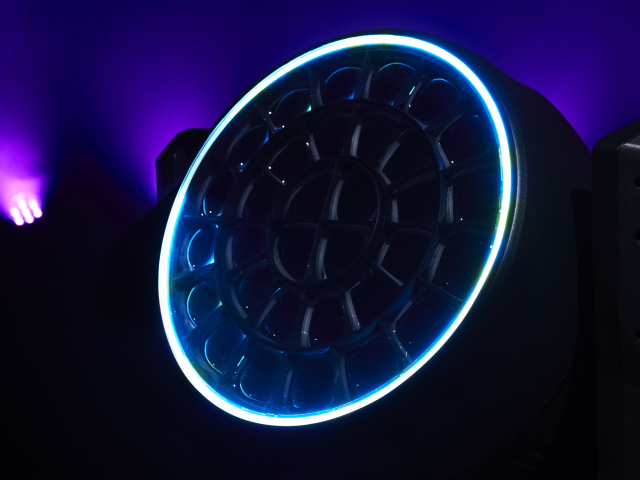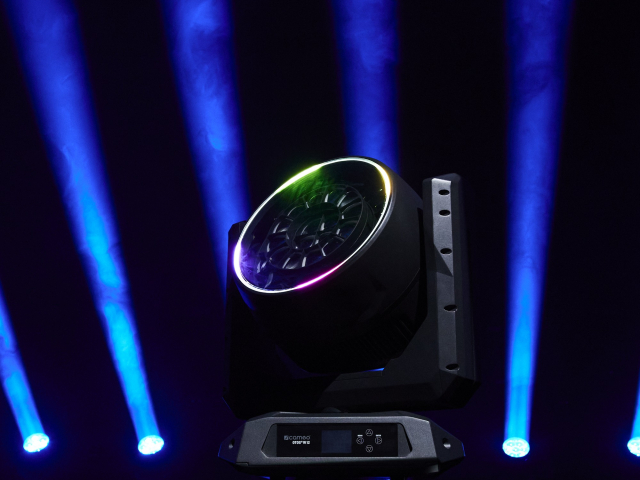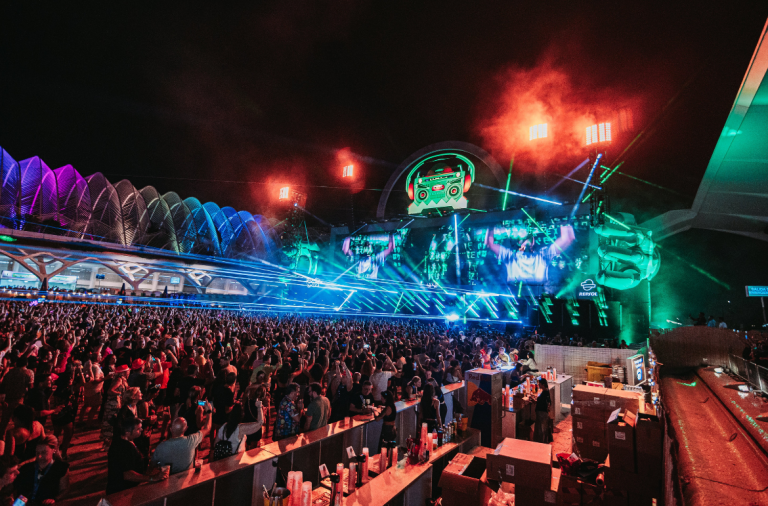Innovative control with DUAL Input Mode
In the dynamic world of lighting design, light control requires constant adaptation and innovation. Traditional setups in which the power and DMX signals are simply forwarded via daisy chain are often no longer sufficient, especially for sophisticated lights with a large number of control channels.
Nowadays, even basic static lights can occupy up to or even more than 15 DMX channels. And these figures can increase exponentially when we talk about larger lights that require an enormous number of control channels due to their high pixel count with individual pixel control. But of course we want to maximise the creative customisation possibilities. However, this freedom can be a real challenge for any lighting system technician.

A perfect example is the Cameo OTOS W12, which occupies 445 DMX channels in FULL Access Mode, the majority of which are pure RGB(L) pixel channels. This represents an enormous challenge, both in terms of cabling and processing within the console peripherals.
DUAL Input Mode presents a pioneering solution to these challenges. This intelligent control concept revolutionises lighting control. By splitting the light into two separate input signals, DUAL Input Mode enables differentiated and efficient control.
The first input is reserved for a DMX table with basic functions. Parameters such as pan, tilt, dimmer, colours, and zoom are controlled here. The second input, on the other hand, is specially designed for controlling the individual pixels of the light, which is particularly important for lights with a high pixel count or individual pixel control.
Thanks to the clear separation of the control signals, DUAL Input Mode opens up completely new possibilities for lighting design. Users can now control both the basic functions and the pixels of a light independently and simultaneously. This enables unrivalled flexibility and creativity in light show design.
Another advantage of DUAL Input Mode is its compatibility with various control protocols. DMX, WDMX, Art-Net, or sACN – DUAL Input Mode enables seamless integration into existing lighting systems and thus opens up a wide range of possible applications.
A practical example can be used to illustrate the use of DUAL Input Mode: the lighting console controls the basic functions of the light via DMX using the first input, while a pixel mapper controls the pixels of the light via Art-Net using the second input. This simultaneous control allows for precise, fast, and flexible lighting design.
Despite the need to connect two separate control cables to the light, DUAL Input Mode offers convenient cable routing and saves both system resources and additional processing units for activating DMX channels.
In a world where the boundaries of lighting design are constantly being pushed, DUAL Input Mode is an essential innovation that enables lighting engineers to realise their creative visions while overcoming technical challenges.
#CameoLight #ForLumenBeings #DualInputMode #EventTech #ExperienceEventTechnology
Further information:
cameolight.com
adamhall.com














